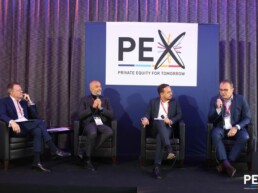Talent is a critical lever of value creation in both Private Equity (PE) and Venture Capital (VC). Yet, the way each ecosystem approaches talent acquisition—especially at the executive level—differs significantly. For investors, founders, and executives navigating these worlds, understanding these differences is essential. This article explores the recruitment philosophies, challenges, and expectations that distinguish talent strategies in PE and VC environments.
1. Investment Thesis Shapes Recruitment Strategy
Private Equity : Operational Turnaround and Scale
PE firms typically acquire mature businesses with predictable cash flows and focus on operational efficiency, strategic repositioning, or roll-ups. Consequently, they prioritize hiring experienced C-level executives—especially CEOs, CFOs, and COOs—with a proven ability to drive transformation, manage P&L, and execute rapid growth or turnaround plans.
- Common profile sought : Ex-consultants, Fortune 500 executives, or serial operators with 20+ years of experience.
- Time to hire : Often before or right after deal closing.
- Goal : De-risk execution with high-performing, low-ego leadership.
Venture Capital : Innovation, Vision, and Speed
VC firms back early- to growth-stage companies where product-market fit, innovation, and speed of execution are paramount. Talent acquisition focuses on founding teams and key first hires—product, tech, and sales leaders who can thrive in ambiguity and scale with the company.
- Common profile sought : Entrepreneurial, high-potential leaders, often under 40, sometimes without prior C-level experience.
- Time to hire : Pre-Series A to post-Series B, depending on stage.
- Goal : Balance vision with execution, ensuring adaptability.
2. Leadership Needs : Transformation vs. Creation
PE : Focus on Transformational Leaders
PE-owned businesses often require executives capable of restructuring, implementing new systems, optimizing performance, and driving EBITDA growth. The leadership style is execution-first, data-driven, and often conservative.
- Top roles hired : CEO, CFO, COO, Head of Transformation, CHRO.
- KPIs : Cash conversion, margin improvement, cost optimization, team alignment.
VC : Emphasis on Builders and Culture Creators
In VC-backed startups, the ability to build from scratch is prized. Culture fit is critical, as early leadership hires shape company DNA. Founders often lead recruitment directly, with an emphasis on flexibility, learning agility, and startup mindset.
- Top roles hired : CTO, VP Product, VP Sales, CMO, Chief of Staff.
- KPIs : User growth, product velocity, ARR, team retention.
3. Recruitment Process : Structured vs. Fluid
PE : Rigorous and Confidential
Recruitment in Private Equity is handled with precision. PE firms often work with retained executive search firms that specialize in top-tier leadership transitions. Confidentiality is key, especially for pre-deal hires.
- Process : Structured interviews, case studies, psychometric tests, board vetting.
- Timeline : 3 to 6 months.
- Common partners : Top-tier executive search firms with operational or sectoral expertise.
VC : Network-Driven and Adaptive
VC firms rely heavily on founder networks, angel investors, and informal referrals. While retained searches are used, especially in later stages, early recruitment is often opportunistic and speed-driven.
- Process : Flexible, rapid, founder-led.
- Timeline : 2 to 8 weeks.
- Common partners : Niche headhunters, talent partners, informal advisors.
4. Compensation Structures Reflect Risk Appetite
PE: High Base, Equity Tied to Performance
PE-backed executives receive competitive base salaries with performance-based equity. The model is designed to align leadership incentives with EBITDA growth and exit multiples.
- Instruments : Stock options, phantom shares, management incentive plans (MIPs).
- Exit horizon : 3–5 years.
VC : Lower Base, Higher Equity Potential
Startups offer leaner cash packages offset by significant equity stakes. Especially in early stages, executives are motivated by long-term value creation and potential liquidity events.
- Instruments : Stock options (often with 4-year vesting), SAFEs, RSUs.
- Exit horizon : 7–10 years or longer.
5. Post-Hire Integration and Support
PE : Operational Playbooks and PE Operating Partners
Post-hire, executives in PE-backed firms are supported by structured playbooks, dashboards, and operational partners. There is frequent board involvement, with performance reviews tied to clear KPIs.
- Support : PE operating teams, external consultants, integration managers.
VC : Coaching and Founder-Led Culture
In VC, new executives integrate into founder-led cultures. Coaching, mentorship from investors, and cultural alignment are more important than dashboards. Flexibility and learning orientation dominate.
- Support : Founder mentorship, investor intros, flexible onboarding.
Conclusion: Two Worlds, Two Philosophies
Talent is the currency of value creation in both PE and VC. Yet, the contexts in which talent is sourced, hired, and scaled differ dramatically.
| Dimension | Private Equity | Venture Capital |
|---|---|---|
| Stage | Mature companies | Early-stage to growth |
| Talent focus | Proven operators | Agile builders |
| Process | Structured, rigorous | Network-driven, adaptive |
| Compensation | Base-heavy + MIPs | Equity-heavy |
| Timeline | 3–6 months | 2–8 weeks |
| Support | Operational partners | Founder/investor mentorship |
Whether you are a candidate looking to understand where you fit best—or an investor refining your recruitment strategy—understanding these differences is key to making better decisions.
Looking for top-tier talent for your PE or VC portfolio company?
AE-Search specializes in executive recruitment tailored to the unique challenges of high-growth and high-impact investing. Contact us to start the conversation.
